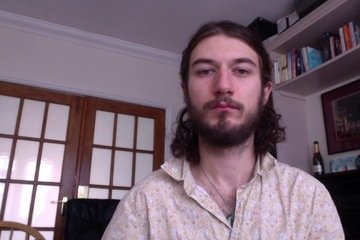Activists Push Philadelphia Mayor to End PARS Agreement, Tackle Stop and Frisk Next
Activists of the Occupy movement push Philadelphia mayor to end Preliminary Arrest Reporting Service Agreement with ICE; protesters seek to tackle the stop-and-frisk program next.

An occupier protests on Broad Street/photo credit: Occupy ICE Philadelphia
The occupation of City Hall since protesters moved the encampment from the original occupation site outside of the Philadelphia Immigration and Customs Enforcement Agency ended last Saturday. However, their fight is far from over, and in the week since the City Hall encampment ended, the protesters have won many victories but have also endured several defeats.
Terminating PARS
On Saturday, July 28, Philadelphia Mayor Jim Kenney announced to protesters that on August 31, he would be terminating the Preliminary Arrest Reporting Service (PARS) agreement that the city of Philadelphia has with ICE. On the heels of this victory came an eviction notice indicating that protesters had to decamp by 2:00 PM that same day before police would come in and forcibly destroy the encampment, which would have been an eerie repeat of the destructive offensive the Philadelphia Police Department launched against the original encampment on July 5 of this year. Tension between protesters and law enforcement officers had intensified throughout the duration of the encampment, and a number of violent incidents had occurred, including the killing of a protester’s dog at the hands of an armed police officer.
A spokesman from the mayor’s office stated that “the eviction notice has nothing to do with the decision to end PARS. Protesters had received prior eviction notices and had worked with city officials to reach a compromise designating this date as the last chance to decamp.”
Never-Ending Work
Shortly after decamping, activists moved the protest to the east side of the Municipal Services Building at 1401 John F Kennedy Boulevard–about a block away from City Hall. Though the activists had won a huge victory with the end of PARS, many of their demands have yet to be met, including the abolition of ICE and the closure of the Berks County Residential Center, a controversial detainment facility used to house undocumented migrants. New goals have also been added, one being the demand to end stop-and-frisk in Philadelphia.
Unfortunately for the occupiers, city officials did not see the new encampment outside of the Municipal Services Building as a separate entity, and almost as soon as it was set up, Mayor Kenney’s office began indicating that if protesters did not disperse, police forces would be called in to force a decampment.
After one protester was arrested, the decision was made to move the encampment yet again, this time to the front of Arch Street Methodist Church. However, the police raided the new site almost immediately, assaulting over 20 people before making three arrests.
The next day, occupiers and a group of protesters from the organization Cosecha Harvest, a Christian Latino Community, staged an occupation of the Comcast Center in downtown Philadelphia, and eight individuals were promptly arrested. Interestingly enough, Comcast has a number of contracts with ICE, and thus benefits financially from the detention of immigrants.
Occupy’s Effect on the Occupiers
One cannot ignore the many contributions that the homeless population of Philadelphia has made to the encampment and the movement as a whole. These individuals have kept the protests going strong even as many of the original activists have returned to their daily lives. The existence of the Occupy encampments as havens of safety, food and shelter for all is a testament to the hard work and ideals of all individuals involved.
Richie Scheerer, who has been a mainstay at the encampments and describes himself as a “nomad,” discussed the sense of empowerment that comes from being part of the occupations:
“We can come together and create a foundation where we can treat each other better than the city treats us. That’s so much more powerful, because we’re not sitting around, waiting for the city to give their handouts, because their handouts are slim to none.”
Miguel Andrade, the communications manager of Juntos, one of the organizations behind the original Occupy ICE protest, commented on the homeless protesters’ contributions to the movement, stating “there is something really beautiful around one marginalized group fighting for and supporting another.”
Protesting for a Better Future

A banner demanding the end of PARS hang over the Vine Street expressway/photo credit: Occupy ICE Philadelphia
The number of homeless immigrants in Philadelphia is increasing, and many of the issues that impact the immigrant community, such as stop-and-frisk, are also incredibly detrimental to the homeless population. The involvement is not just a show of solidarity, but an ideal of two marginalized groups facing similar obstacles, working together for a better future.
Given that many undocumented immigrants cannot protest openly and do not have the opportunity to let their voices be heard due to fear of arrest and deportation, it is uplifting to see that a community facing similar problems is raising awareness about these issues.
Despite heavy police presence and interference, the protesters’ camp remains outside of Arch Street Methodist Church, and the movement remains strong. There has been a new emphasis on ending stop-and -risk in the city of Philadelphia as one of the goals of the movement, and activists have been engaging in a number of actions to combat this practice, including recently hanging a banner on a bridge over the Vine Street expressway demanding an end to the stop-and-frisk program.














But PLEASE cops protect the stoops protesting.